On the Boundary in Lyady
The archive of Shaya Mendelevich Pulner - 1930.
The Kunstkamera, officially the Peter the Great Museum of Anthropology and Ethnography, is the oldest museum in Saint Petersburg, Russia, and one of the oldest in the world. Founded by Peter the Great in 1714, it was Russia’s first public museum, initially housing the Tsar’s personal collection of curiosities.
Could there be a bigger curiosity than Jews in the Soviet Union? The “expedition” of Shaya Mendelivich Pulner documented:
Dubrovno (Дубровно).
Lyady (Ляды).
Jewish Collective Farm in Yartsevo (Ярцево).
Lyady and Lubavitchi belonged to the Lyubomirski family. Lyady and Lubavitch are on the very edge, border of the Pale, so only the most brave, and adventurous wondered that far off base. It’s the Jewish boundary. Lyady is even to the east of Lubavitchi. But unlike Lubavich, it is now in Belarus. These are the border towns in many ways. The border between Poland and Russia, Belarus and Russia, the boundary of Greater Lithuania and the Jewish Lita. It’s an eternally contested cultural edge under the tension of the split.
Alter Rebbe was known as “from Lyady” until in 1812 when his Napoleon Derangement Syndrome forced him to self exile. He died and tragically threw his lot with the mother Russia.
Lyady is on the side of the road connecting Moscow with Warsaw. In 1910, the total number of inhabitants in Lyady was 5,854 people. Of these, Christians were 1,150 people, Jews 4,704 people. After the revolution, Russia opened up to the Jews, it was a heartbreaking trap. Many young people from Lyady and the wider pale walked into the historic trap, seeking economic and cultural opportunities to the east, the messianic redemption of Communism. Many, like the Alter Rebbe, found untimely death instead.
Shames Bayevsky in Lyady
Mud and a couple of wood boards for the sidewalk. “ADA accessible”. If you take a position that the microbiome needs mud. This was the healthiest environment for the kids to grow up. The “luxury” of modern life is laced with poison, ubiquitous plastic in food and our homes. Suburban and urban parking lots of toxic air. Food intentionally contaminated with deadly chemicals. Radiation and electromagnetic waves we bath in. It’s a testament to the resilience of the human body that we survive until 50.
The Sail Boat of Lyady
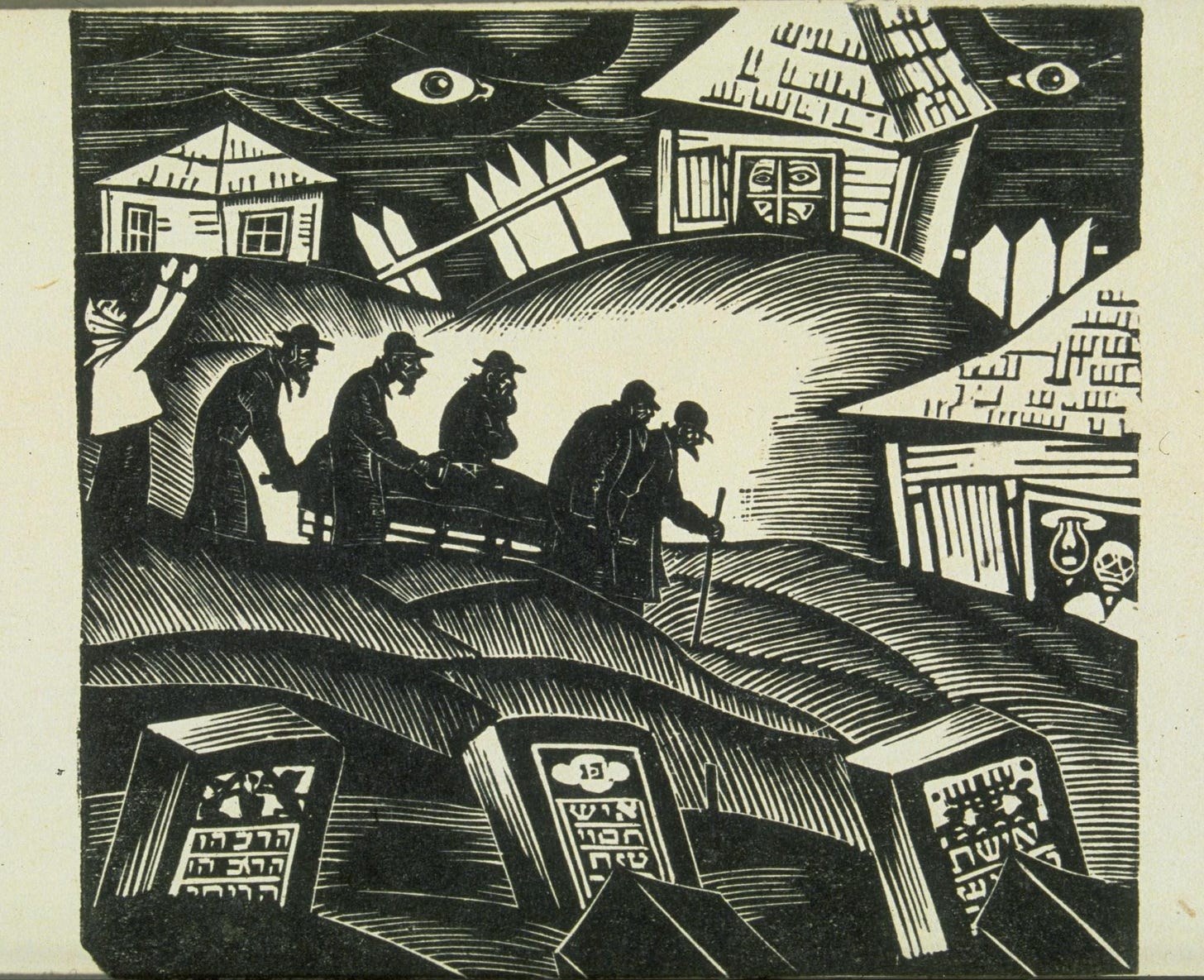
The “Mita” is a boat. It reminds me of this painting by Andrew Wyeth. It’s not really a bed, it is a boat sailing the ocean of time. Even has a pillow. First class travel across the endless and tragic Russian field (Русское поле).
I dream of dreaming in that boat, asleep or maybe dead. Wyeth died in 2009.
That Bly poem: "The energy leaves the wine, and the minister falls leaving the church. It will not come closer the one inside moves back, and the hands touch nothing, and are safe."
Shoychet Revzin in Lyady
This chicken and perhaps even people will be dead soon. Only ten years left of suffering in this world. An innocent child peeking in the doorway. They are already dead, as the old world has collapsed. One messianic religion swept by the messianic religion of Marxism. These people hope there is God, through the bitter poverty, the horror of communism and ubiquitous endless sadness they hope. They will be disappointed and betrayed.
At least they ate beautiful, healthy chickens. The American chickens have a short life in the concentration camps, they look, and walk like the holocaust survivors…
A boy or a girl? Holding an apple.
Because this is a double-exposed shot, you can see Shoychet Revzin and his Shechita post in the background.
During digitizing, many photographs and names were misidentified. The above photo is listed as “Wife of Shoychet Revzin getting ready for Shabbos.” She is wearing a different dress than the wife of Shoychet Revzin and a different tichel. Although there is a distinct and beautiful bowl plate carved out of wood that appears in both pictures. The wooden, carved bowl is to the right of both women. Maybe she is a relative, a sister in the midst of the same Shabbbos prep?
The above photo is a Vermeer that came alive. I can see a mortar with pestle on the shelf. There is a negel vasser cup with the two handles. Base of the kerosene lamp. Beautiful old and broken enamel white pitcher. Two metal grates hanging on the wall. This entire back wall shelf is a painting.
The woman is cooking a meal that is not taken out of plastic wrap. I think she might be carrying a child.
You need to start a fire in the oven before you can cook. People also have things in modern kitchens they don’t really use. Just looking at this photo makes your heart crumble. It also makes you me hate the time we live in… Modernity broke with history. It’s a different form of collapse.
A Shule in Lyady
Sorcerous bookshelf.
It is very unlikely that these men will have descendants in America who will learn how to fake a smile?
Maybe there were reading Torah, so they turned around from the omud and are facing the bimah. Or the photographer asked them.
The book “Lubavitch and Chayaleho”, I sold it on eBay in a moment of particular anger with Chabad (and I was selling books because I needed the money). But recently, I thought, I should have kept it. I relate to the Russian Hasidim deeply. Unlike the farcical and repulsive version of Chabad that Ramash created in America.
The big Chabad tefilin are as historically accurate as a foot tall shtreimel. Ditto for “Chabad tallis.” Perhaps Rebbes wore it, even that I very much doubt. But of course, now every baal hagole in 770 is a Rebbe. Except the real Rebbe is missing in inaction...
Update in the comments by har grizim:
“I think it is a mistake to assume that all these people were Lubavitchers or even chasidim — all these towns had mixed populations of chasidim and misnagdim, who spoke the same language (in more sense than one) and even married each other.”
I think this is the same Hevrah Kaddisha Yid that later appears in the cemetery photo, below.
Modernity makes an entrance. And so boys and girls, in the vast Soviet Cemetery of 1930s, shockingly, they started to put pictures of the deceased on the mazeivos (even in Lyady).
Beautiful face and gentle soul. There are no paved streets. So you always require boots to navigate the mud. That iron fence is the most luxurious feature of the shule.
Lyadeer Beis HaHaim
Unusual name for a Jew, don’t think any relation to the Russian revolutionary anarchist Peter Kropotkin (Петр Алексеевич Кропоткин).
These are old, battered stones. They must have predeceased the second coming of the Schneersons to Lyady.
A person with capacity and talent, even a genius, becomes restless in the teenage years. A teenager desperately wants and needs to escape the provincial prison. Often the teenage escape ends tragically. That was precisely the path of the talented and naive Jewish teenagers who flocked to the south, to Mezhibozh. There, on the border with Turkey, it was closer to the Shabbatian rituals. The secret brotherhood. The sweet identity based on the unconditional and forbidden friendship and love. The impressionable teenagers started the fire that burns even today. It’s a consuming fire, it kills everyone in its path… The conflagration propelled by the selling of the false messianic hope to the profoundly hopeless and broken, like communism. It's an ancient grift. It’s easier to sell false hope than advance people economically.
This is the grave of מהרי”ד, the only son of Chaim Schneur Zalman, the 3rd son of the Tzemach Tzedek (does it say on the stone that TT was his grandfather and also his uncle?). יצחק דובער שניאורסון was the second Lyadeer Chabad Rebbe. It’s written that he died on the last day of Pesach 1909. This picture was taken in 1930. So the stone was 20 years old then.
Someone go look if the stone is still there.
I already wrote about his grandson, Moisey Borisovitch Schneerson, born in Lyady, a brilliant meshichist revolutionary, high-ranking NKVD officer who was shot in Stalin's purges of 1939.
In 1928, only two years before this photo memento, Mysia Schneerson who was as detached from reality as her father, wrote from her luxury apartment in Riga to her dear friend Nacha Rivkin:
“I would gladly write to you about us, but everything here somehow remains the same, and since you also correspond directly with my mom and grandma, you roughly know all about our life from them. We don’t have any acquaintances here, save for some individuals who came with us from the USSR. We lead a very monotonous and boring life. Often, I feel such an acute desire to go back “home”, that, it seems, I would walk there by foot. This probably is not going to happen any time soon.”
Completely embarrassing. Although I had a few (many) embarrassing moments in my life and my fantasy is that others will forget (delete it). But I can’t. It still stings me badly. I was always emotionally immature, often acted as a child among adults. My expectation of others are poorly and unrealistically calibrated even today. But I have never been wrong in my understanding of the balance of political power. Who is the good guy and who is the bad guy. In fact, my awareness of this is so advanced and ahead of it’s time that sometimes I wish I were mistaken, and closer to the views of the commoners. I urgently want to be like everyone else, maybe have a passing, non-lethal TDS infection?
This is Chaim Schneur Zalman, the 1st Lyadeer Rebbe, next to his son.
בספר בית רבי נכתב אודותיו ואודות הדימיון בינו לבין זקנו - אדמו"ר הזקן, ומצוין שם כי נולד בשנה הראשונה להסתלקות אדמו"ר הזקן ונקרא על שמו, וכן הוא התגורר בליאדי אחת עשרה שנה - כמו אדמו"ר הזקן, והוא נפטר בן ס"ו שנה - כמו אדמו"ר הזקן, וגם תאריך הפטירה היה בחודש טבת - כמו אדמו"ר הזקן.
The complete collection. Thank you, Moshe Rochlin for the tip. There will be another post from the archive. I have more to say about the archive, God help us. Please forgive me.


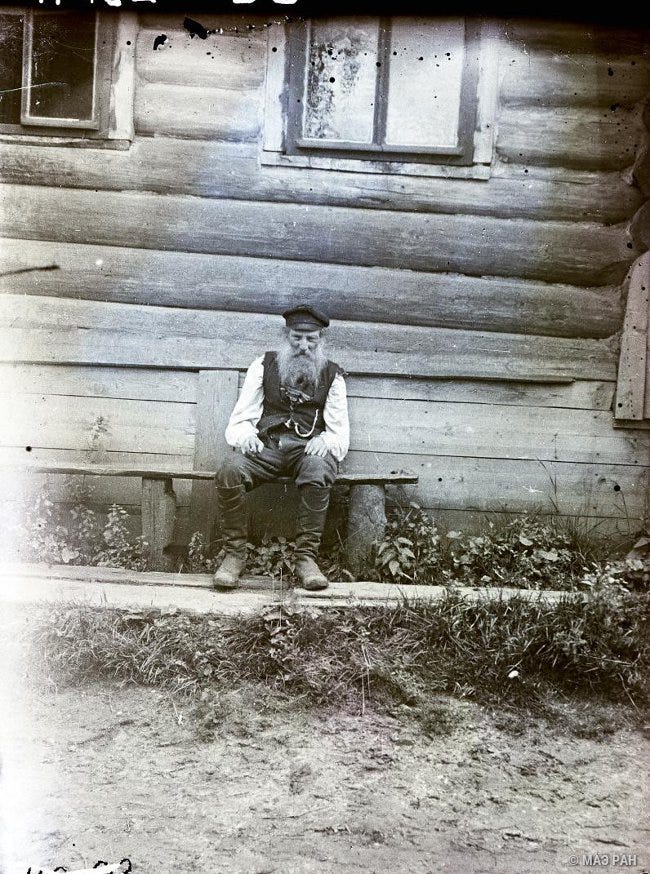
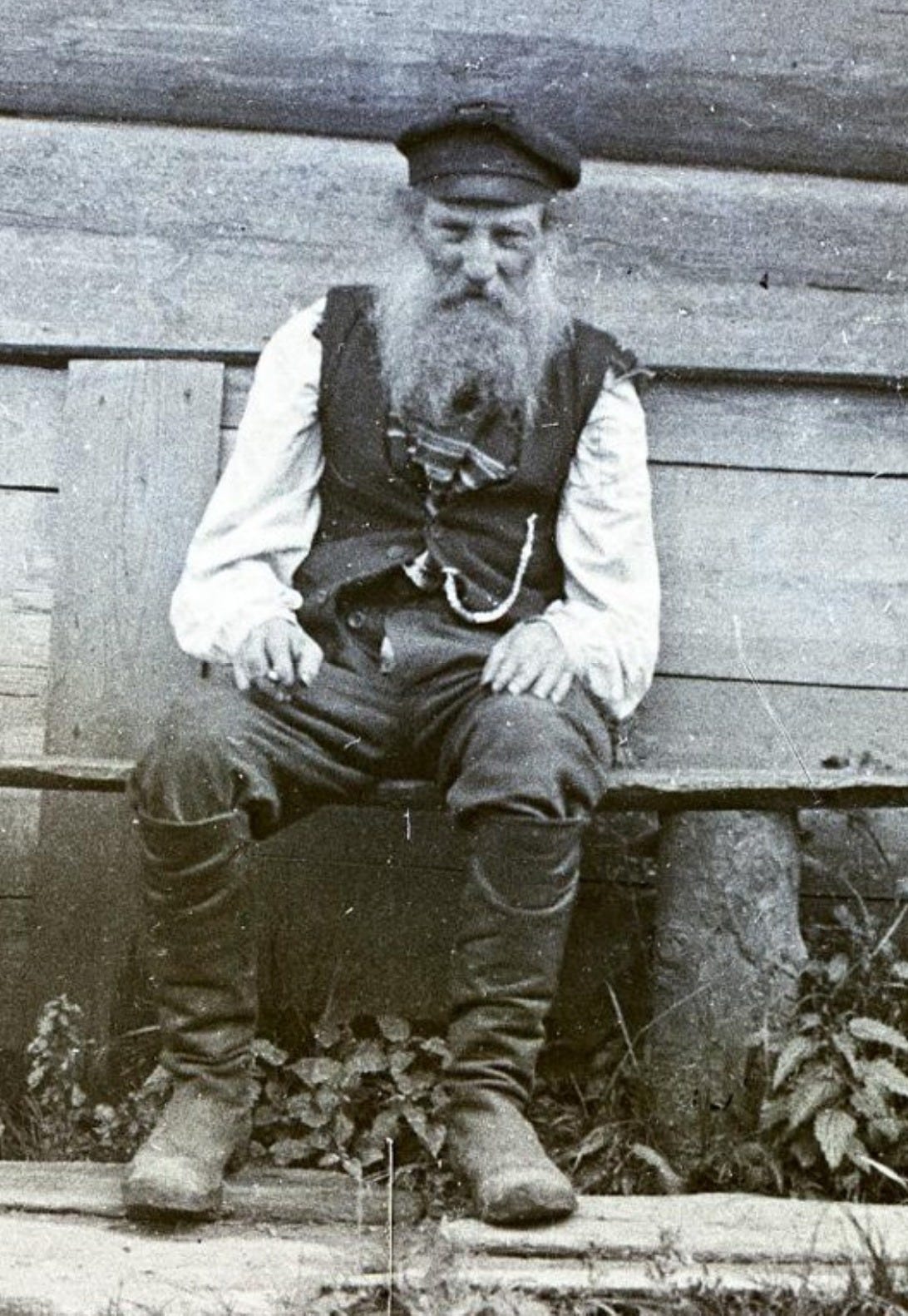

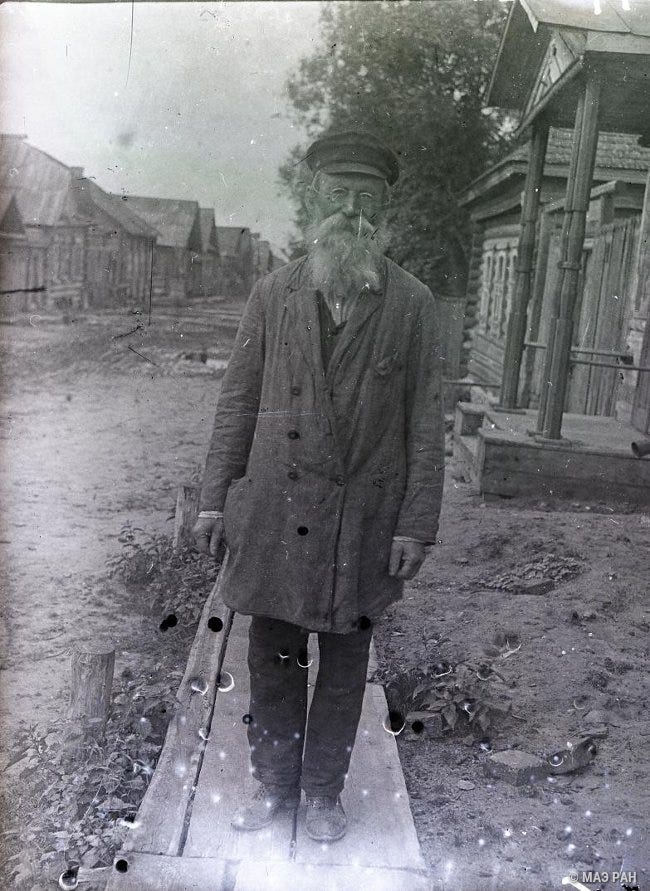

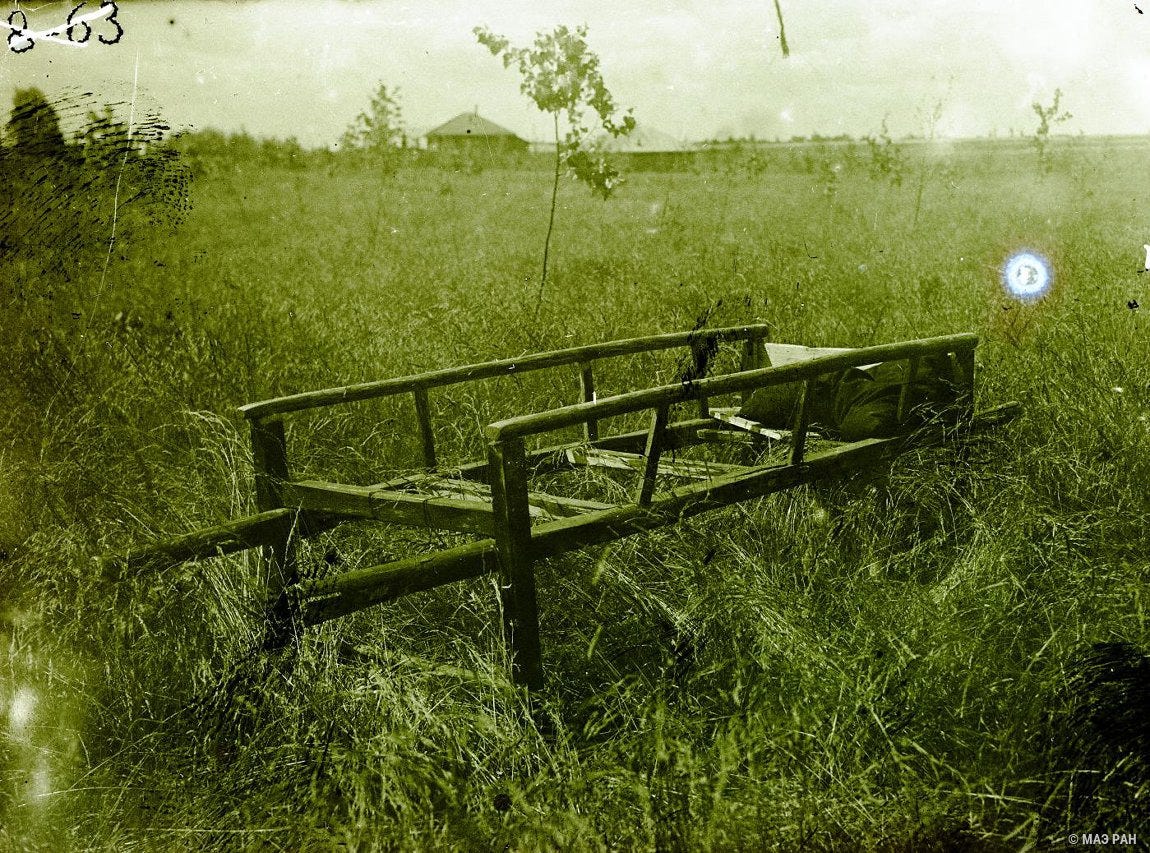
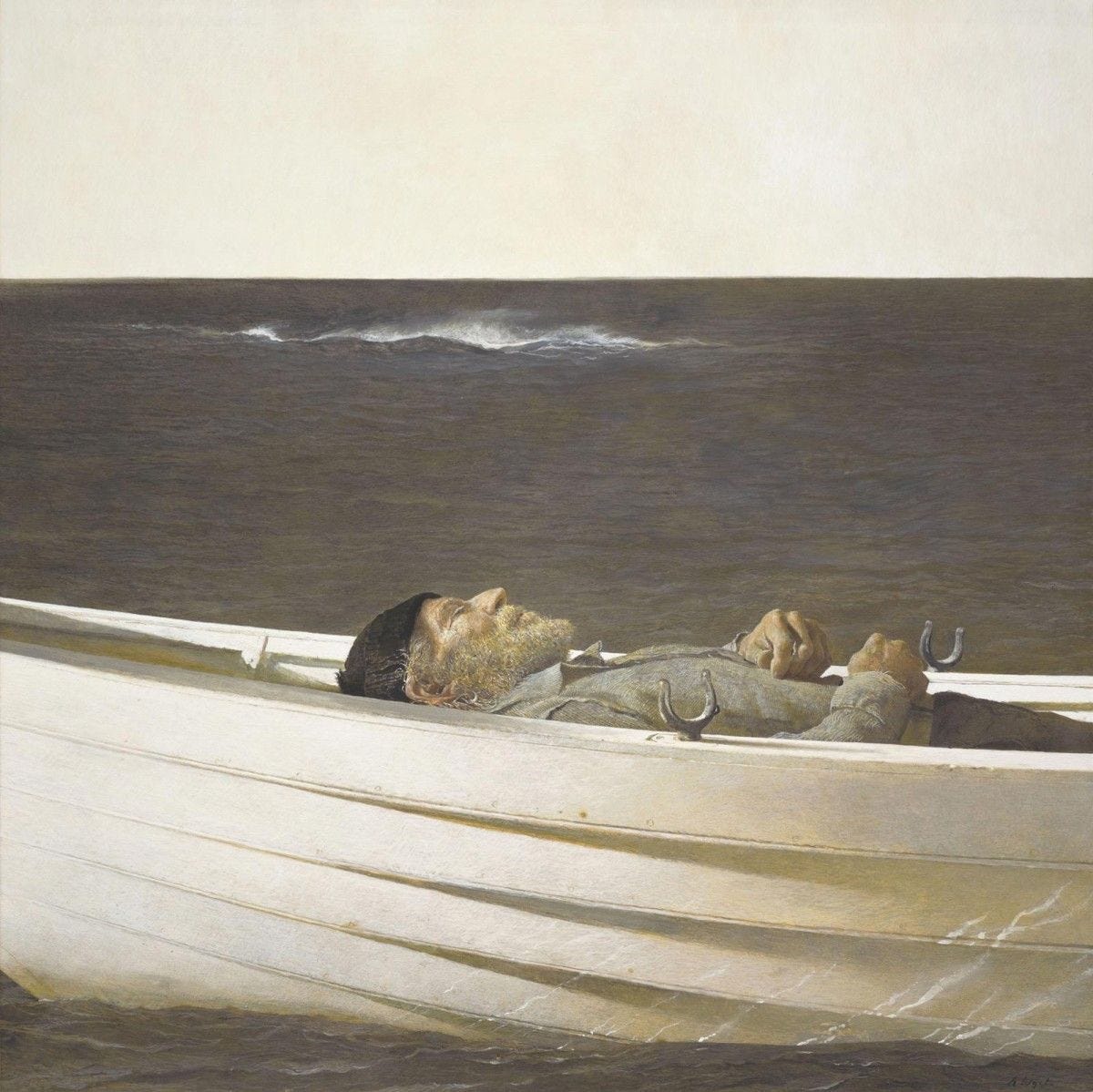
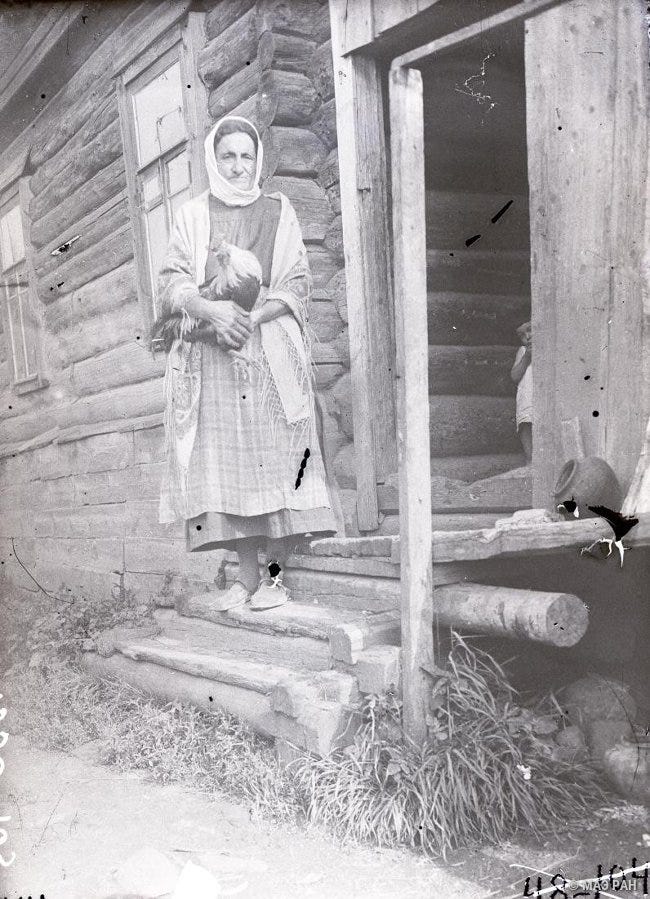

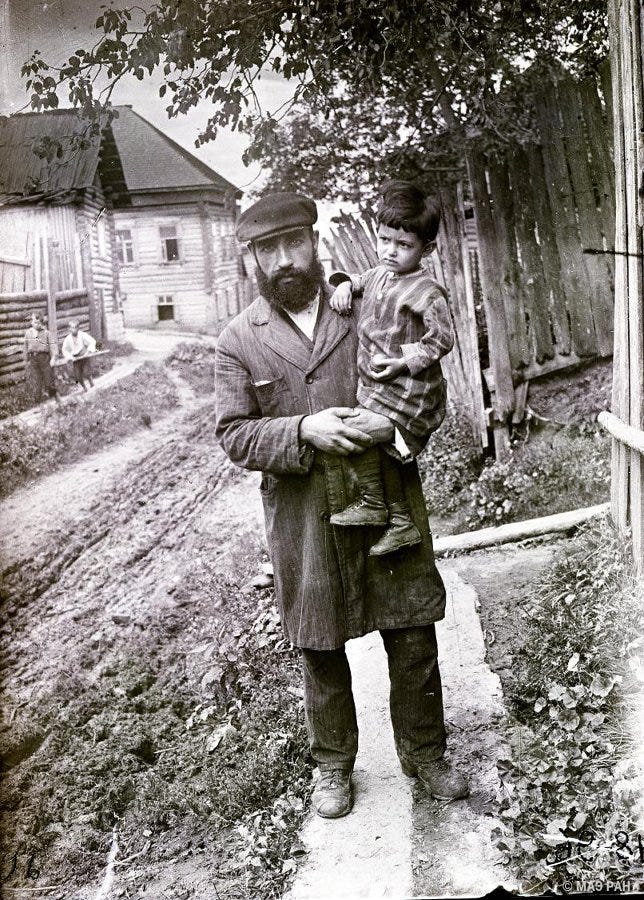
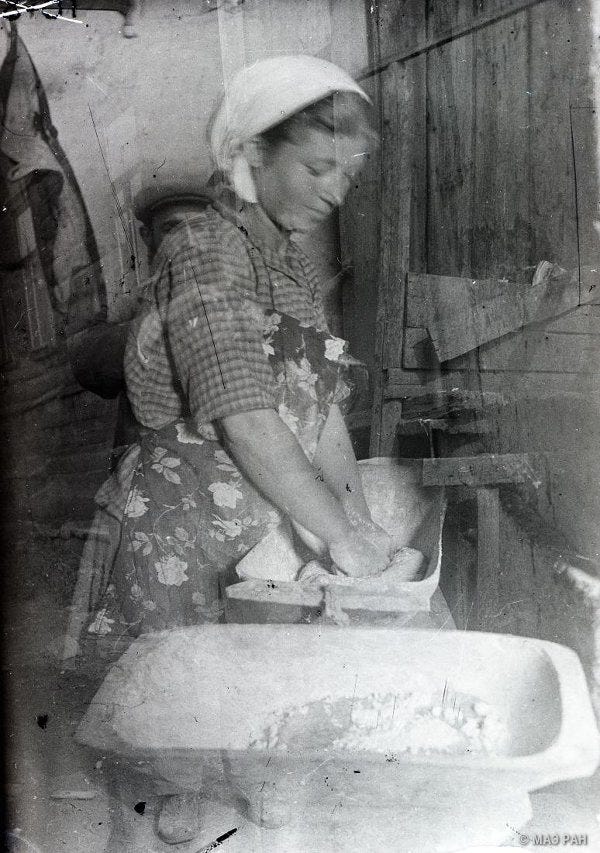

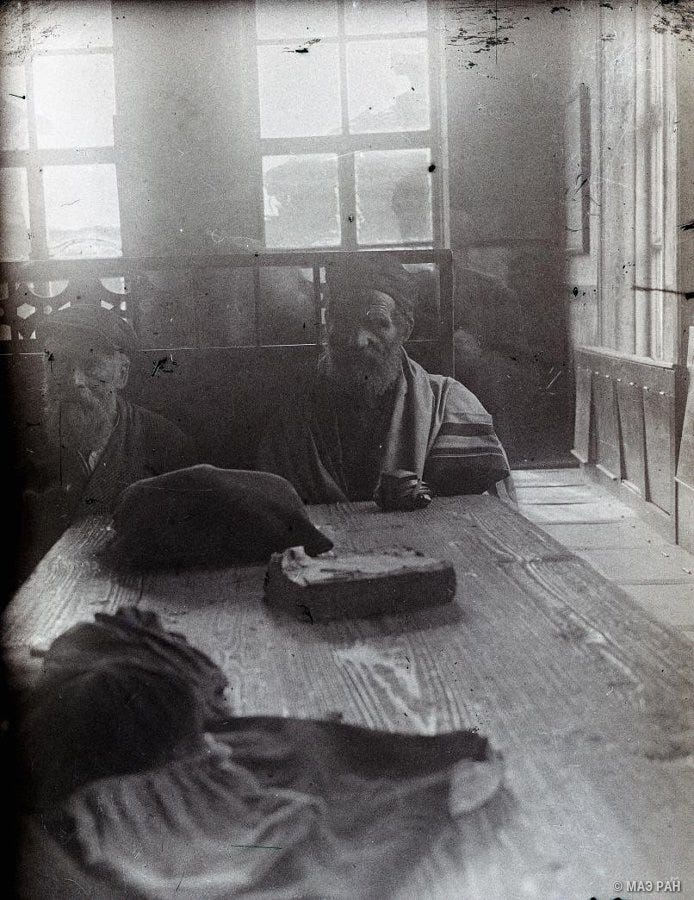
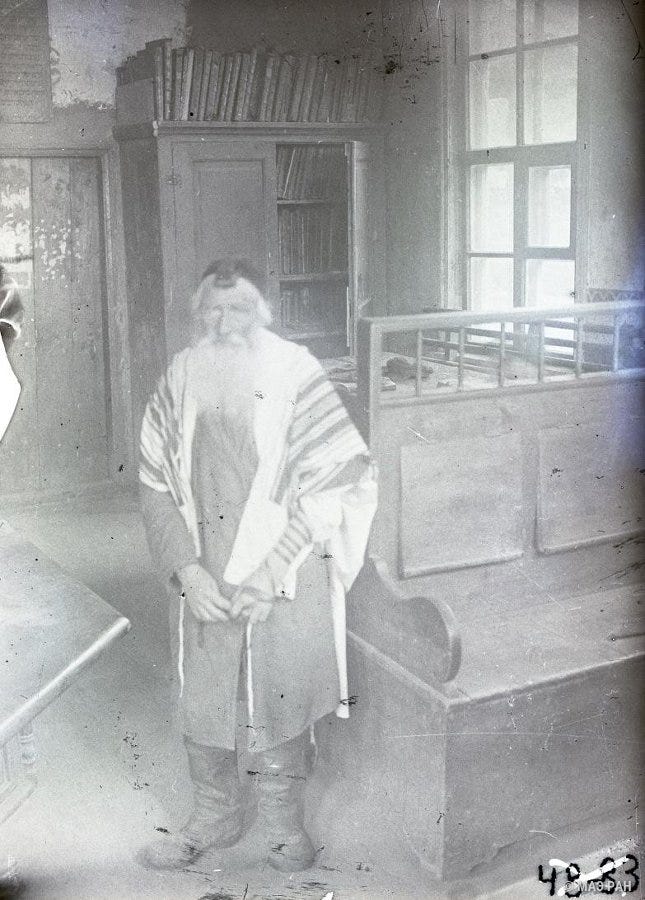
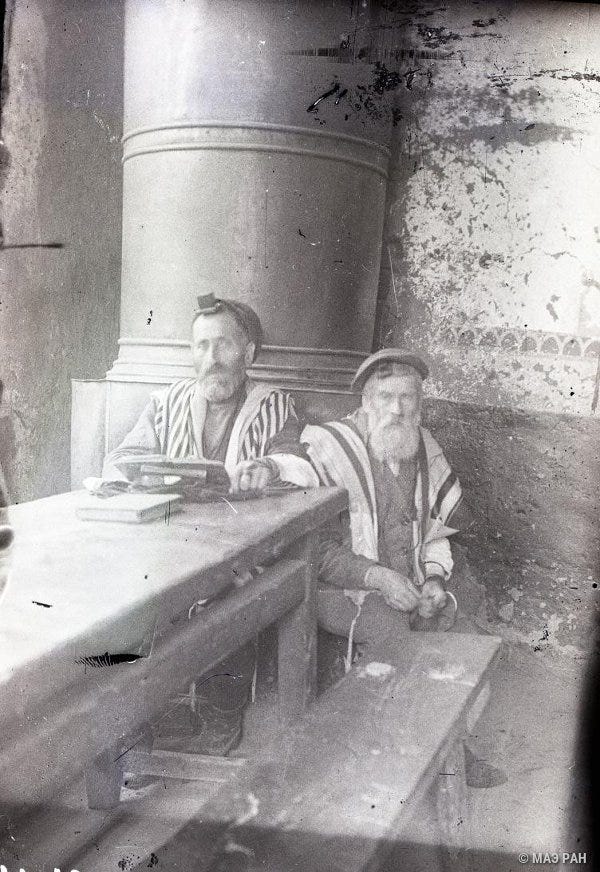

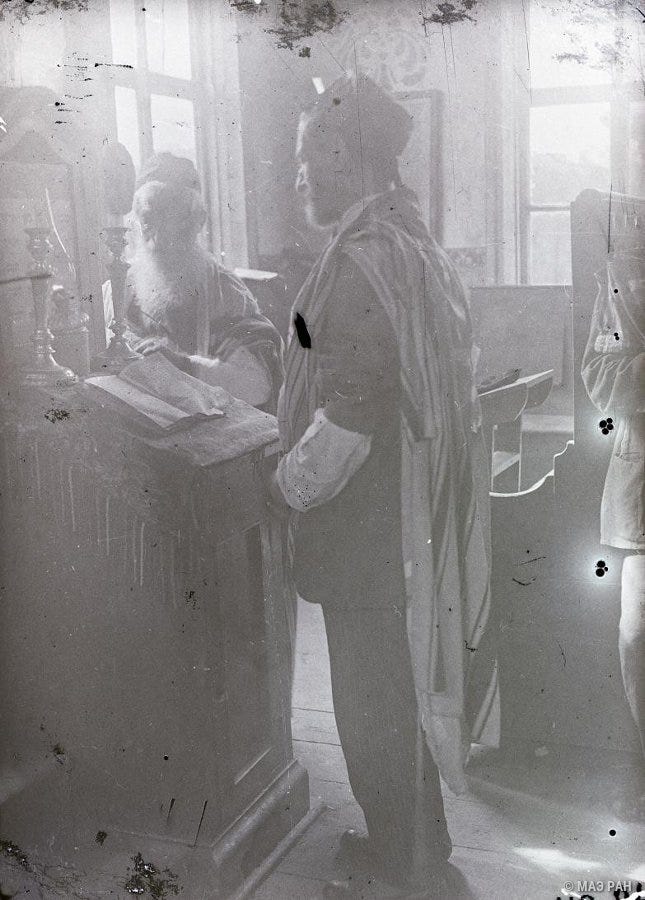
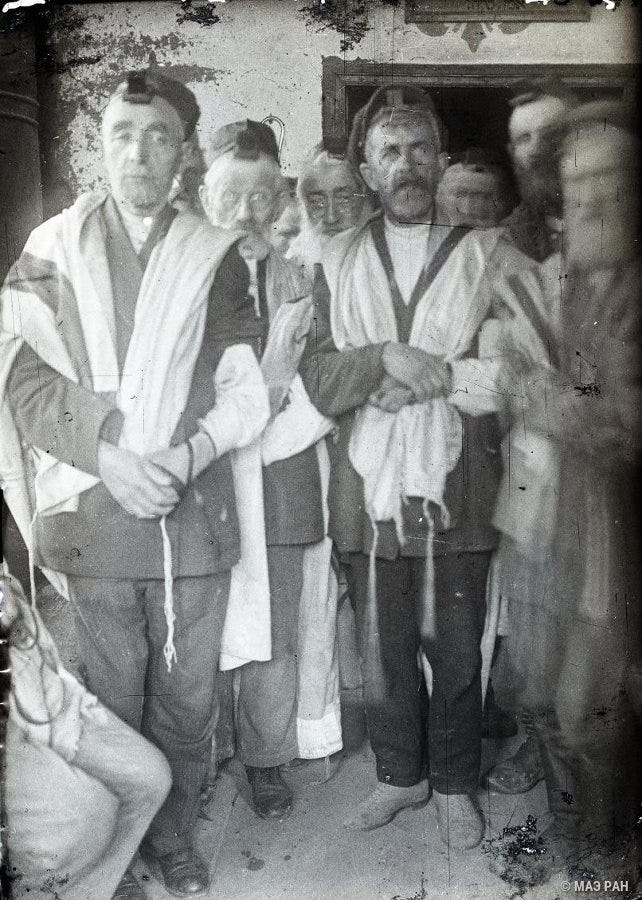
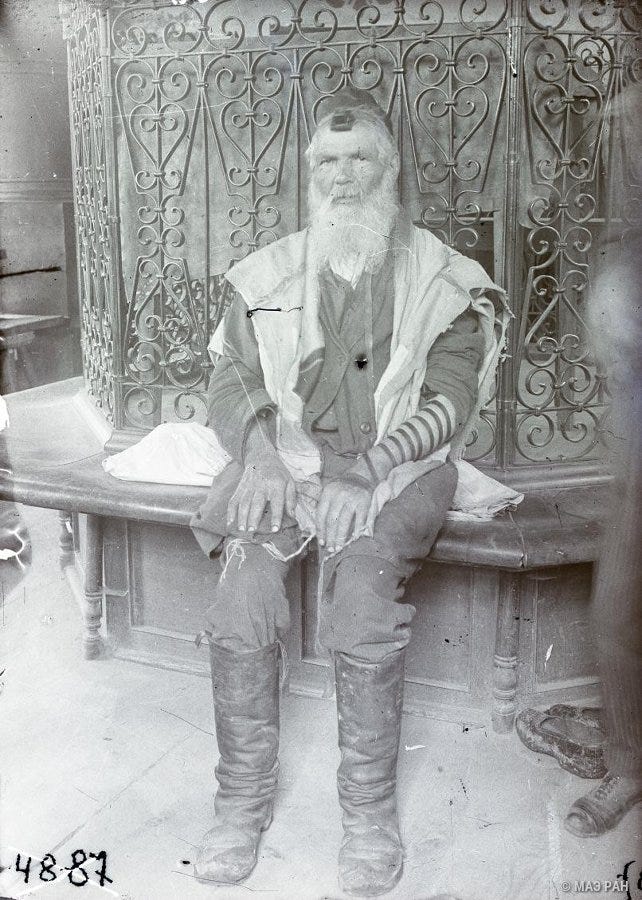



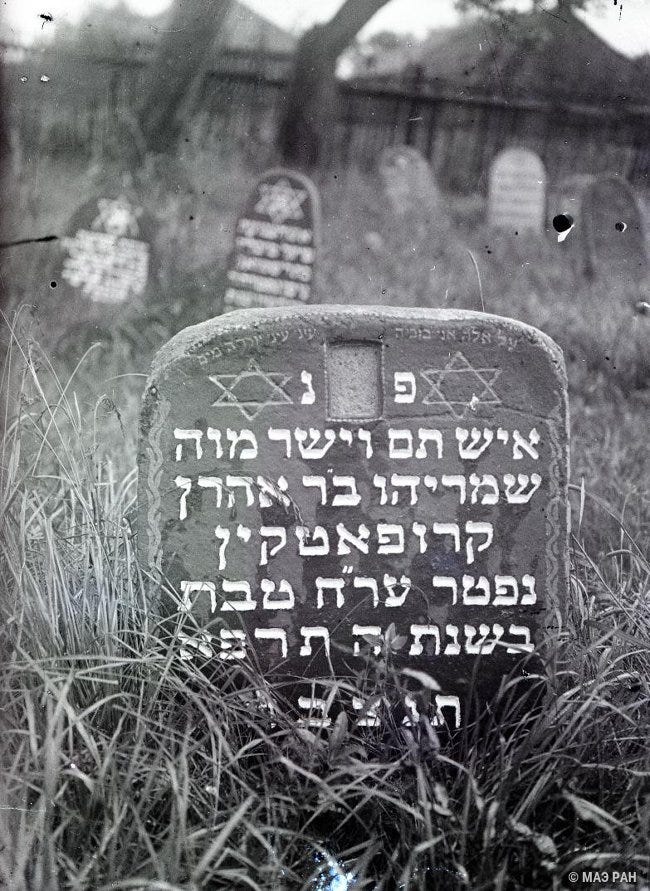
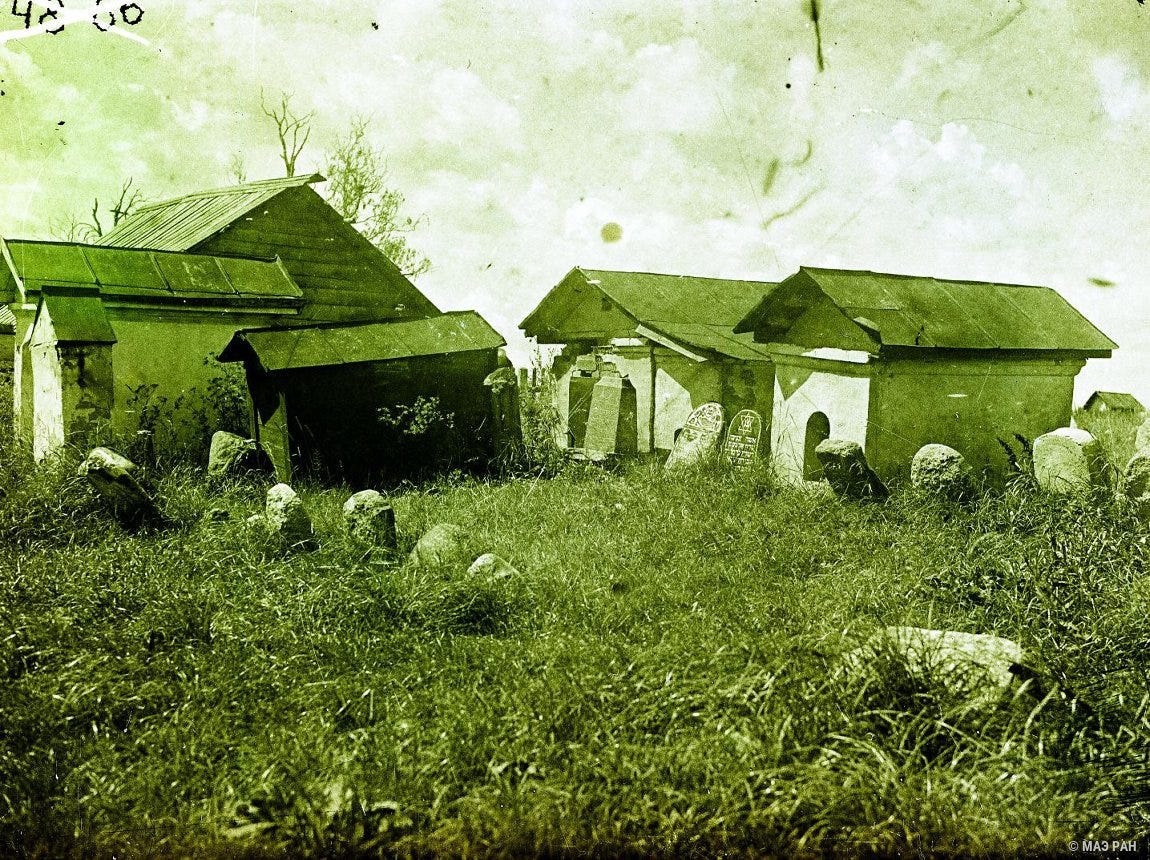
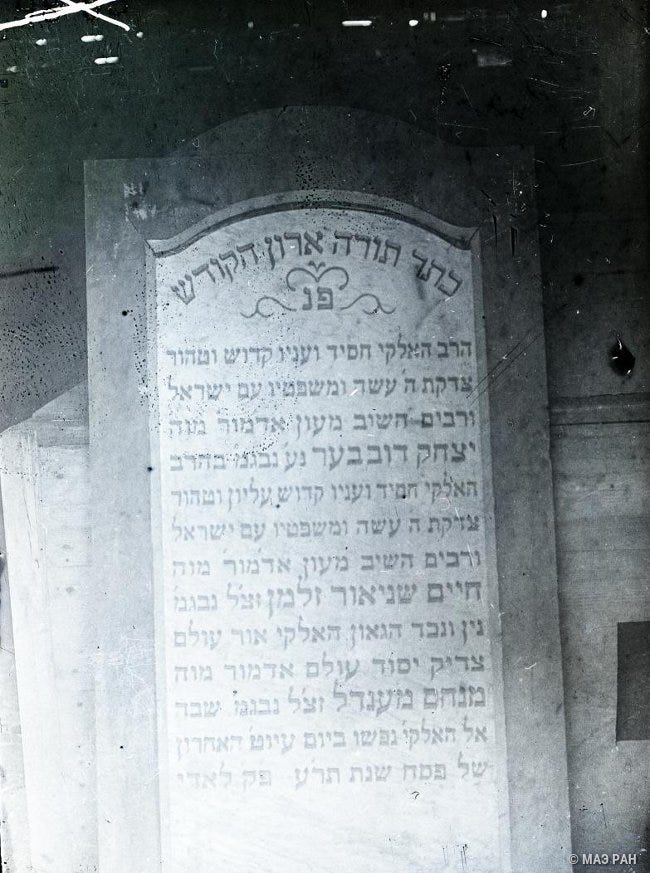
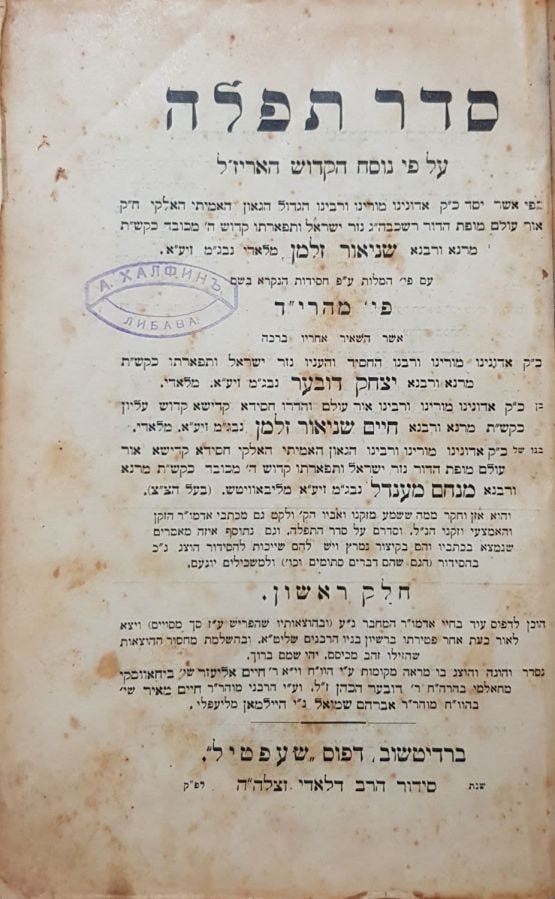
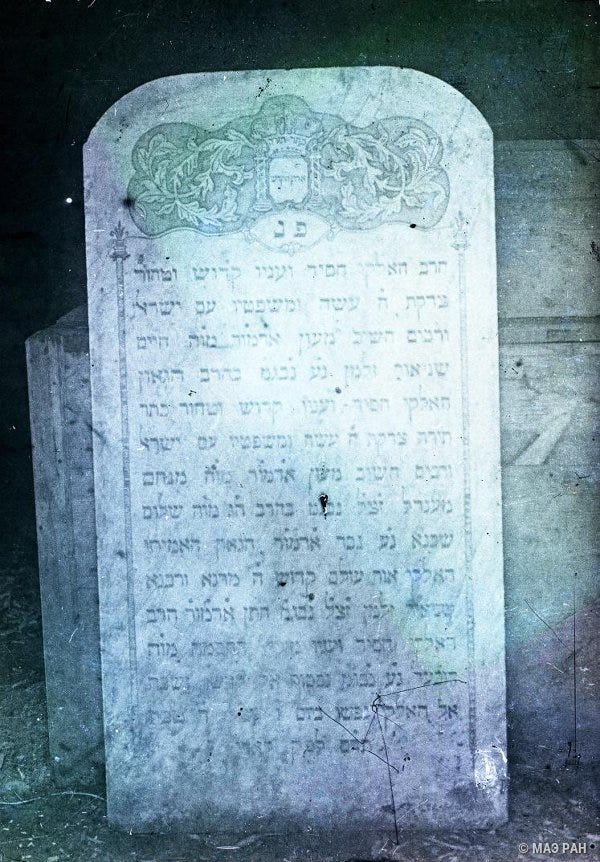
נפלא, תודה
I think it is a mistake to assume that all these people were Lubavitchers or even chasidim — all these towns had mixed populations of chasidim and misnagdim, who spoke the same language (in more sense than one) and even married each other.